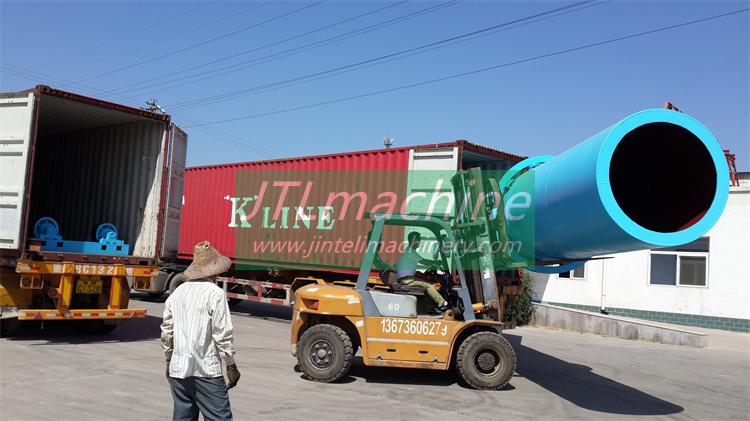Table of Contents
Maximizing Efficiency with drum drying equipment
Drum drying equipment and free-standing rotary drying equipment are integral components in various industries, including food processing, pharmaceuticals, and waste management. These machines play a crucial role in reducing the moisture content of materials, thereby enhancing their quality and shelf life. However, to maximize the efficiency of these machines, it is essential to understand their working principles and the strategies to optimize their performance.
Drum drying equipment operates on a simple yet effective principle. It involves the heating of a rotating drum that has the material to be dried spread over its outer surface. As the drum rotates, the material gets exposed to the heat, which evaporates the moisture. The dried material is then scraped off the drum surface, ready for further processing or packaging. On the other hand, free-standing rotary drying equipment works by tumbling the material to be dried inside a rotating cylinder, which is heated from the outside. The tumbling action ensures that all parts of the material get exposed to the heat, resulting in uniform drying.

To maximize the efficiency of drum drying equipment, several factors need to be considered. First, the drum’s rotation speed is crucial. A faster rotation speed means that the material spends less time in contact with the heated drum surface, leading to faster drying. However, if the rotation speed is too high, the material may not dry evenly. Therefore, finding the optimal rotation speed is key to achieving maximum efficiency.
Second, the thickness of the material layer on the drum surface also affects the drying efficiency. A thicker layer means that the heat has to penetrate deeper to evaporate the moisture, which can slow down the drying process. On the other hand, a thinner layer can dry too quickly, leading to possible overheating and degradation of the material. Therefore, maintaining an optimal material layer thickness is essential.
Similarly, to optimize the performance of free-standing rotary drying equipment, the rotation speed and the fill level of the cylinder are important factors. A higher rotation speed and a lower fill level can lead to faster drying, but they can also cause the material to be thrown around inside the cylinder, which can lead to uneven drying and potential damage to the material. Therefore, finding the right balance between rotation speed and fill level is crucial.
In addition to these operational parameters, regular maintenance of the drying equipment is also essential for maximizing efficiency. This includes regular cleaning of the drum or cylinder to prevent build-up of material, which can affect heat transfer and drying efficiency. Also, regular inspection and replacement of worn-out parts can prevent breakdowns and ensure that the equipment operates at its peak performance.
In conclusion, drum drying equipment and free-standing rotary drying equipment are vital tools in various industries. By understanding their working principles and optimizing their operational parameters, it is possible to maximize their efficiency, leading to improved product quality and reduced energy consumption. Regular maintenance of these machines is also crucial to ensure their longevity and optimal performance. Therefore, investing time and effort in understanding and optimizing these machines can yield significant benefits for businesses in the long run.
Understanding the Mechanics of free standing rotary drying equipment
Understanding the mechanics of free standing rotary drying equipment is crucial for industries that rely on drying processes. This equipment, also known as drum drying equipment, is widely used in various sectors, including food processing, pharmaceuticals, and chemical industries, due to its efficiency and versatility.
The fundamental principle behind the operation of free standing rotary drying equipment is direct contact between the material to be dried and a heated gas, usually air. The dryer comprises a large, rotating cylindrical tube, often referred to as the drum. The drum is positioned at a slight horizontal slope to allow gravity to assist in moving material through the drum. As the drum rotates, the material is lifted up by a series of internal fins lining the inner wall of the drum. When the material gets high enough to roll back off the fins, it falls back down to the bottom of the dryer, passing through the hot gas stream as it falls.
This process of lifting and falling of the material by the internal fins through the hot gas stream allows the moisture to evaporate, effectively drying the material. The dried material then exits the drum at the lower end, while the moist, hot gas leaves the drum at the upper end. The efficiency of this equipment lies in its continuous operation and its ability to handle a large volume of material.
The temperature within the drum is another critical factor in the drying process. The higher the temperature, the faster the drying process. However, it’s essential to maintain a balance as excessively high temperatures can cause the material to stick to the drum or even burn. Therefore, temperature regulation is a crucial aspect of operating free standing rotary drying equipment.
The size of the drum also plays a significant role in the drying process. Larger drums can handle more material, leading to increased productivity. However, they also require more energy to operate. On the other hand, smaller drums may be more energy-efficient but may not provide the same level of productivity. Therefore, choosing the right size of the drum is a critical decision that depends on the specific needs of the operation.
Another important aspect of free standing rotary drying equipment is its maintenance. Regular cleaning and inspection of the drum are necessary to ensure its optimal performance. Over time, residue from the dried material can build up on the drum’s inner surface, affecting its efficiency. Regular maintenance helps to prevent this buildup and prolong the equipment’s lifespan.
In conclusion, free standing rotary drying equipment, or drum drying equipment, is a versatile and efficient tool for various industries. Its operation relies on the direct contact between the material and a heated gas, facilitated by the rotation of a large cylindrical drum. The temperature within the drum, the drum’s size, and regular maintenance are all crucial factors in the equipment’s performance and efficiency. Understanding these mechanics can help operators optimize their drying processes, leading to increased productivity and cost savings.





